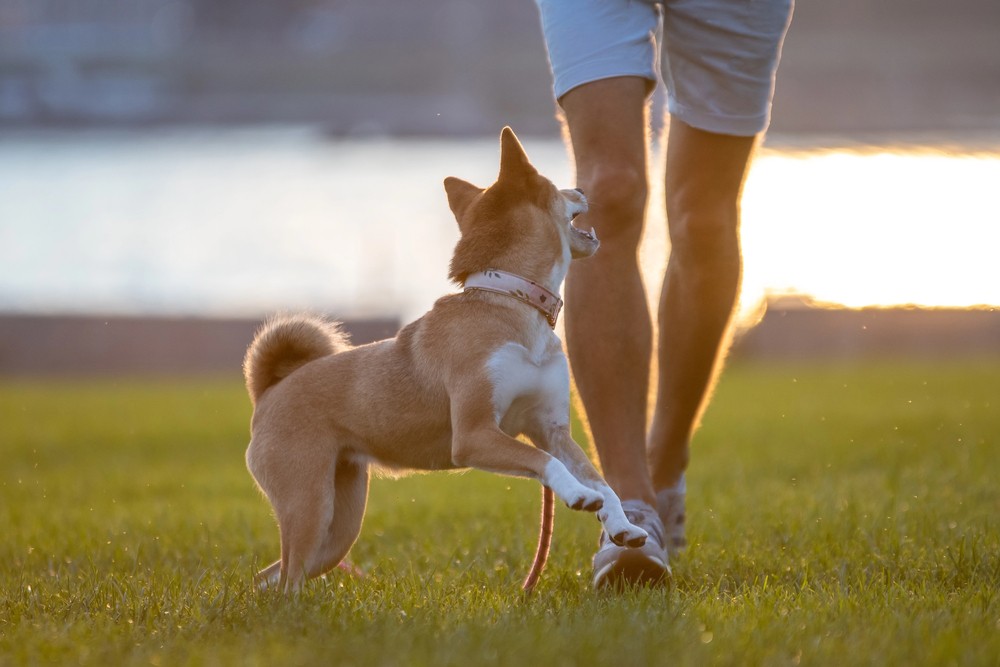Staying Connected in Rally: How to Build Better Teamwork in the Ring
If you've ever walked into a Rally ring and felt like your dog wasn't quite with you, you're not alone. Connection is one of the most important—and often overlooked—skills in Rally. Without it, everything feels harder. With it, everything flows.
In Rally, connection isn't just nice to have—it's essential. It affects the quality of your heeling, the accuracy of your signs, and your overall performance as a team. So how do we build and maintain that connection throughout an entire course?
Let's take a closer look.
What Is Connection in Rally?
Connection in Rally means that your dog is focused, engaged, and in sync with you from start to finish. They're not just executing behaviors—they're actively participating in the conversation.
You feel it when:
- Your dog checks in frequently and naturally
- They respond promptly to cues without hesitation
- Your heeling feels smooth and consistent
- Your team moves together with rhythm and flow
Without connection, you might see:
- Forging, lagging, or crooked sits
- Missed cues or delayed responses
- Distractions, sniffing, or checking out mid-course
Connection is the glue that holds your performance together.
Common Reasons Dogs Disconnect in Rally
Understanding why disconnection happens is the first step toward solving it. Here are a few common causes in Rally:
- Unclear expectations: If your dog doesn't understand what's coming next, they may hesitate or lose confidence.
- Boredom or burnout: Repeating the same signs without variety or engagement can dull your dog's enthusiasm.
- Stress or pressure: Trial environments can be overwhelming, especially if your dog isn't used to the energy of a ring.
- Handler disconnection: If you mentally drift or forget your training plan, your dog can sense it and disengage.
Good news? We can train for all of this.
5 Rally-Specific Strategies for Better Connection
1. Use "Where's Your Brain?" Before You Enter
Before heading into the ring—or even before you begin a course in training—check in with your dog. Ask for a simple behavior like eye contact, hand touch, or a trick they love. If they respond quickly and confidently, you're good to go. If not, that's valuable information! Take a few moments to reengage before continuing.
2. Build a Strong Start Routine
A consistent pre-run routine helps both you and your dog shift into "performance mode." Maybe it's a couple of tricks, a short game, or saying your "Ready?" cue and feeding a treat. When this routine becomes predictable, it creates a mental cue: We're working together now.
3. Keep Connection Through Reinforcement Loops
How you deliver reinforcement matters. If your dog grabs the treat and immediately disconnects, you're missing a huge opportunity. Reinforce while maintaining orientation—feed in heel position, or use a hand touch followed by a treat to keep your dog looking at you after reward delivery. Build the expectation that the reward is part of a continuous loop, not the end of the game.
4. Train for Transitions and Flow
Rally isn't just about isolated behaviors—it's about linking them smoothly. Connection often breaks down in transitions, like between signs or after a reward. Practice chaining signs together and reinforcing moments between them. If your dog is used to staying engaged during movement and in those micro-moments, they'll stay with you when it counts.
5. Reward Engagement, Not Just Behavior
It's easy to focus on the behavior—fronts, finishes, position changes—but don't forget to reinforce the engagement itself. Did your dog offer eye contact while lining up at the start sign? Reward it. Did they glance up during a course pause? Yes, treat that too. Reinforcing these moments builds a dog who chooses to stay connected because they know it pays off.
When Disconnection Happens Mid-Course
It will. That's okay.
Instead of feeling discouraged, ask:
- Did I disconnect first?
- Was that section too long without reinforcement?
- Was the environment too challenging?
You can plan for re-connection points on course. Insert a known, rewarding behavior (like a favorite pivot or side step) or use your engagement cue ("Ready?") to regain focus. These little resets can help bring your dog back into the game.
This video is a great example of a connected run.
Final Thoughts: Connection is a Skill, Not an Accident
Just like heeling or a perfect front, connection is something we can train. It requires intention, repetition, and reinforcement. When we make it a priority—not just something we hope will happen on trial day—our Rally performances improve dramatically.
So next time you head out to train, don't just practice signs. Practice connection.
Because when your dog is with you—truly with you—that's when Rally becomes joyful, connected, and fun.
By accepting you will be accessing a service provided by a third-party external to https://www.fenzidogsportsacademy.com/
